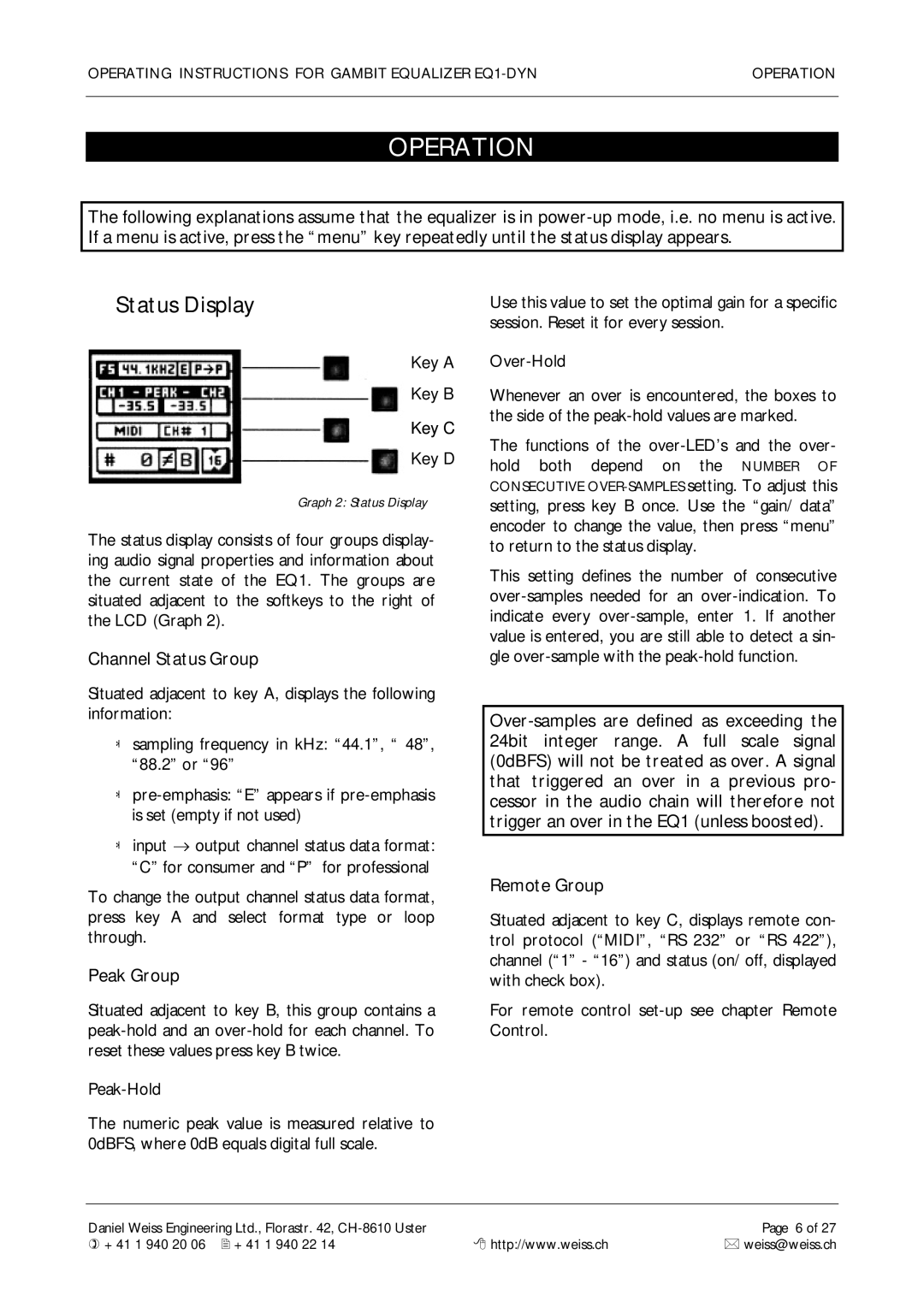
OPERATING INSTRUCTIONS FOR GAMBIT EQUALIZER | OPERATION |
|
|
OPERATION
The following explanations assume that the equalizer is in
Status Display
Key A
Key B
Key C
Key D
Graph 2: Status Display
The status display consists of four groups display- ing audio signal properties and information about the current state of the EQ1. The groups are situated adjacent to the softkeys to the right of the LCD (Graph 2).
Channel Status Group
Situated adjacent to key A, displays the following information:
sampling frequency in kHz: “44.1”, “ 48”, “88.2” or “96”
input ![]() output channel status data format: “C” for consumer and “P” for professional
output channel status data format: “C” for consumer and “P” for professional
To change the output channel status data format, press key A and select format type or loop through.
Peak Group
Situated adjacent to key B, this group contains a
The numeric peak value is measured relative to 0dBFS, where 0dB equals digital full scale.
Use this value to set the optimal gain for a specific session. Reset it for every session.
Whenever an over is encountered, the boxes to the side of the
The functions of the
This setting defines the number of consecutive
Remote Group
Situated adjacent to key C, displays remote con- trol protocol (“MIDI”, “RS 232” or “RS 422”), channel (“1” - “16”) and status (on/ off, displayed with check box).
For remote control
Daniel Weiss Engineering Ltd., Florastr. 42, |
| Page 6 of 27 |
) +41 1 940 20 06 2 +41 1 940 22 14 | 8 http://www.weiss.ch | * weiss@weiss.ch |
